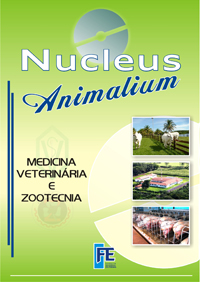EVALUATION OF QUALITY OF SUNFLOWER silages, Maize, sorghum and millet in different spaces
DOI:
https://doi.org/10.3738/na.v1i1.259Keywords:
Silagens. Qualidade. Espaçamentos. Silage. Quality. Spacings.Abstract
The experiment was conducted on the campus of FAFRAM, Faculty “Dr. Francisco Maeda “in the municipality of Ituverava - SP, to evaluate the quality of silage on crops of sunflower, corn, millet and sorghum in different spacings.The experimental design was a randomized blocks in a factorial 4 x 4 (4 crop spacing and 4), totaling 16 treatments with two replications. Each plot was formed by three meters, spaced 0,50, 0,60, 0,70 and 0,80 meters. The data were submitted to variance analysis and comparison of means by Tukey test having set the level of 5% probability of error. The chemical analysis of silage was carried out to obtain the percentage of dry matter (MS), crude protein (PB) and nitrogen. The tests were performed by the laboratory of Dr. Francisco School of Bromatology Maeda - FAFRAM. The cultivation of sorghum had 28,49% of dry matter and growing millet showed 7,32% of crude protein and 1,17% nitrogen, with significant percentages. As for spacing of 0,50, 0,60, 0,70 and 0,80 m with averages of % MS, % PB and % N were not significant. It was concluded that the culture that stood out in the percentage of dry matter was the sorghum and the percentage of crude protein was that of millet. Regardless of spacing, the silage had good qualities.Downloads
Published
2009-06-05
Issue
Section
Artigos

